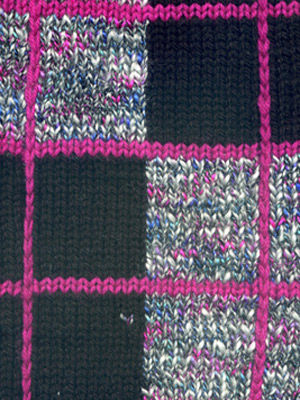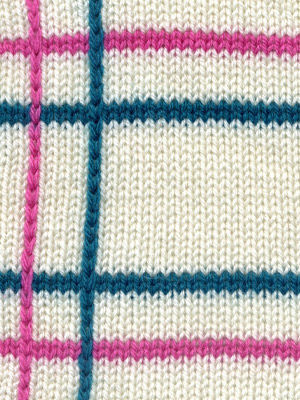
Here is the close up of the 'gully' created by leaving 1 needle in non working position while knitting stripes and then embroidering the vertical lines afterward.

Here is the finished sample. Once the knitting had been finished, a chain stitch was embroidered along the gully as a guide line. A crochet chain can be substituted

The vertical stripes had one needle out of working position, the next 4 were in working position and the next needle was out of working position. Followed by 22 needles in working position and then two needles left in non working position as before.